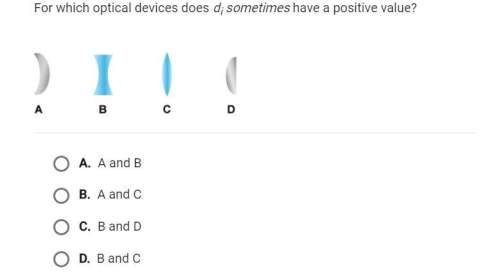
Physics, 15.10.2021 07:40, npellot123
Un cuerpo cae libremente desde el reposo encuentre su aceleración la distancia que recorre en tres segundos su rapidez después de caer 70 m el tiempo necesario para alcanzar una rapidez de 25 m sobre segundos y el tiempo que tarda en caer 300 m

Answers: 2
Other questions on the subject: Physics

Physics, 22.06.2019 10:30, Kathryn014
Light from a sodium lamp passes through a diffraction grating that has 1000 slits per millimeter. the interference pattern is viewed on a screen 1.000 m behind the grating. the first (m = 1) two bright yellow fringes that are visible are 0.7288 m and 0.7300 m from the central maximum. what are the wavelengths of these two fringes?
Answers: 2

Physics, 22.06.2019 15:30, Christyy1837
What are the similarities & differences between a thermistor and a light dependent resistor in physics?
Answers: 2

Physics, 22.06.2019 16:40, Crxymia
Aparticle's position is given by x = 3.00 - 9.00t + 3t2, in which x is in meters and t is in seconds. (a) what is its velocity at t = 1 s? (b) is it moving in the positive or negative direction of x just then? (c) what is its speed just then? (d) is the speed increasing or decreasing just then? (try answering the next two questions without further calculation.) (e) is there ever an instant when the velocity is zero? if so, give the time t; if not, answer "0". (f) is there a time after t = 3 s when the particle is moving in the negative direction of x? if so, give the time t; if not, answer "0".
Answers: 3

Physics, 22.06.2019 18:30, ayoismeisalex
Both speed and velocity measure how fast something is moving. however, since speed is not a it does not require a(n question 6 options: a) quantity , unit b) magnitude, unit c) scalar, direction d) vector, direction
Answers: 2
Do you know the correct answer?
Un cuerpo cae libremente desde el reposo encuentre su aceleración la distancia que recorre en tres s...
Questions in other subjects:

Mathematics, 25.07.2019 21:00

History, 25.07.2019 21:00

Biology, 25.07.2019 21:00



History, 25.07.2019 21:00


English, 25.07.2019 21:10








